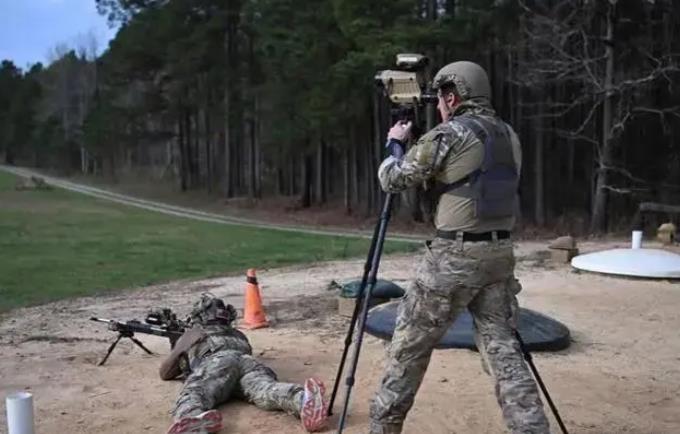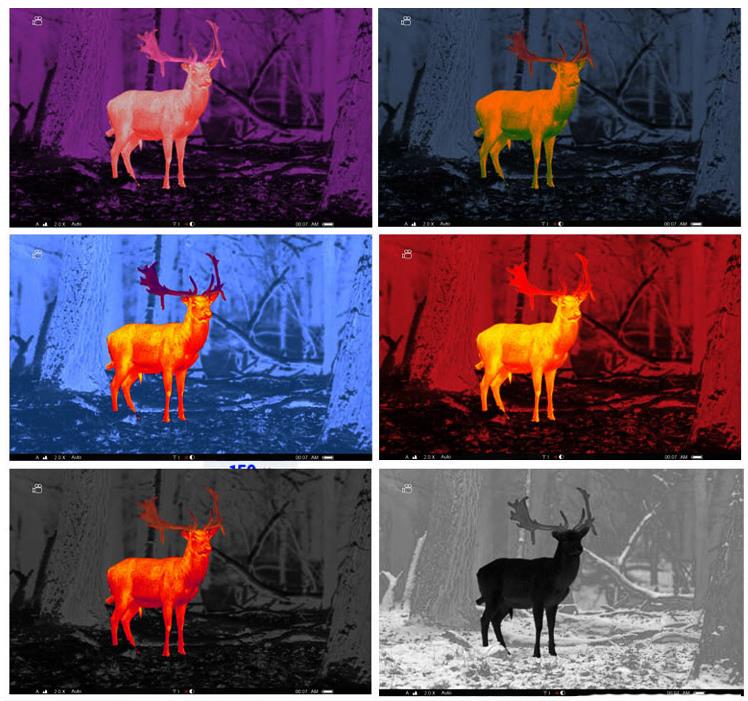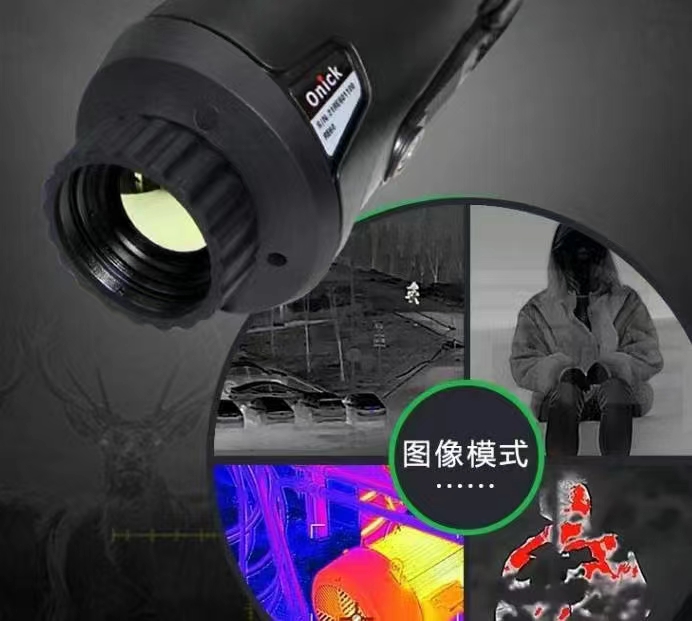Infrared imaging: a device that converts infrared images directly or indirectly into visible light images. There are mainly infrared image converters, infrared camera tubes and solid-state imaging devices. The infrared image converter tube is mainly composed of three parts: a photocathode that is sensitive to near-infrared radiation, an electronic optical system, an infrared imaging device and a fluorescent screen (see figure).

Edit this section Imaging principle The commonly used photocathode is a silver oxygen cesium photocathode (S1 cathode), and the excitation energy required for electrons to escape the photocathode is 11.2 electron volts. The corresponding long-wave limit of the sensitive wavelength is 1.2 microns, and the peak response wavelength is about 0.8 microns. The S25 cathode prepared with antimony sodium potassium insulator, or the negative electron affinity cathode prepared with III-V compounds (such as GaAs), also responds to near-infrared radiation.
The photoelectrons excited by infrared radiation are accelerated and focused by the electronic optical system to reach the fluorescent screen, so that it emits a visible light image with a brightness distribution corresponding to the incident infrared irradiance distribution.

Infrared camera tubes include infrared photoconductive camera tubes, silicon target camera tubes and pyroelectric camera tubes. The structure and working principle of infrared photoconductive camera tubes are exactly the same as those of ordinary photoconductive camera tubes (see camera tubes). The only difference is that infrared photoconductive camera tubes use lead sulfide photoconductive target surfaces that are sensitive to near-infrared radiation. Silicon target camera tubes use silicon diode arrays as target surfaces, and photons stimulate photocurrents on the silicon arrays to form signals. Silicon target camera tubes are also only sensitive to near-infrared radiation. Camera tubes that use pyroelectric materials (such as deuterated triglycine sulfate) as target surfaces are called pyroelectric camera tubes. The infrared radiation image projected onto the pyroelectric target surface causes the temperature of each point on the target surface to change, and this change is proportional to the irradiance received by the point.
The change in temperature causes the electrical polarization of the target surface material, and the degree of polarization is proportional to the magnitude of the temperature change, so a polarized charge distribution that completely corresponds to the received irradiance distribution is generated on the target surface. In this way, the optical image is converted into an electrical image of the charge distribution. Pyroelectric camera tubes are sensitive to long-wave infrared radiation, and the radiation signal must be modulated when used. The structure and working principle of solid-state imaging devices are different from those of the above devices (see charge-coupled device).

Thermal imaging: The temperature distribution of a normal human body has certain stability and characteristics. The temperature of different parts of the body is different, forming different thermal fields. When a disease or functional change occurs in a certain part of the human body, the blood flow in that part will change accordingly, resulting in a change in the local temperature of the human body, which is manifested as a high or low temperature. According to this principle, the infrared radiation of the human body is collected by the thermal imaging system and converted into a digital signal to form a pseudo-color thermal map. Using special analysis software, professional physicians analyze the thermal map to determine the location of the human lesion, the nature of the disease and the degree of the lesion, providing a reliable basis for clinical diagnosis. Virtual in vitro image formed by human thermal radiation Thermal imaging technology, which is what we often call infrared radiation imaging technology.
According to the optical theory of imaging of natural objects, any object that can be captured by light can generate a background object photosensitive imaging state. In a modern society with highly developed science and technology, night scene photography attachments with infrared thermal imaging have become popular. Regarding the principle of infrared imaging, it is mainly based on the infrared radiation principle of objects higher than the absolute temperature of space -237.15 degrees. That is to say, any object higher than the absolute temperature of space will form a thermal infrared radiation state, while objects lower than the absolute temperature of space -237.15 degrees do not have thermal infrared radiation. When the human body is in a special state, its body temperature is different from that in a static state, especially after participating in strenuous activities. In addition, after a meal and after drinking a lot of hot water or high-concentration alcohol, the body temperature is also higher. Some people's body temperature will also rise after doing mind qigong. The body temperature difference between people and between men and women will also show different states. The heat (infrared) radiation intensity of a person's body temperature in the above state will be higher than normal.
The strange photos that appear in nature are often caused by the above factors, because most objects in the earth's space are generally higher than the absolute temperature of the universe -237.15, so they will form a thermal infrared radiation state. The imaging time of the thermal infrared camera system is generally used in the dark night background. Since the natural light at night is very weak and the light intensity is insufficient, it is difficult for objects to be photosensitive and imaged, so we will enable the additional device of infrared imaging. In addition, when taking pictures at night or in the dark, it is very likely that the camera's flash is not bright enough to make up for the night light, or the camera's flash is damaged, or the camera itself does not have a flash function, so people will enable the infrared imaging function (there may be these factors).

